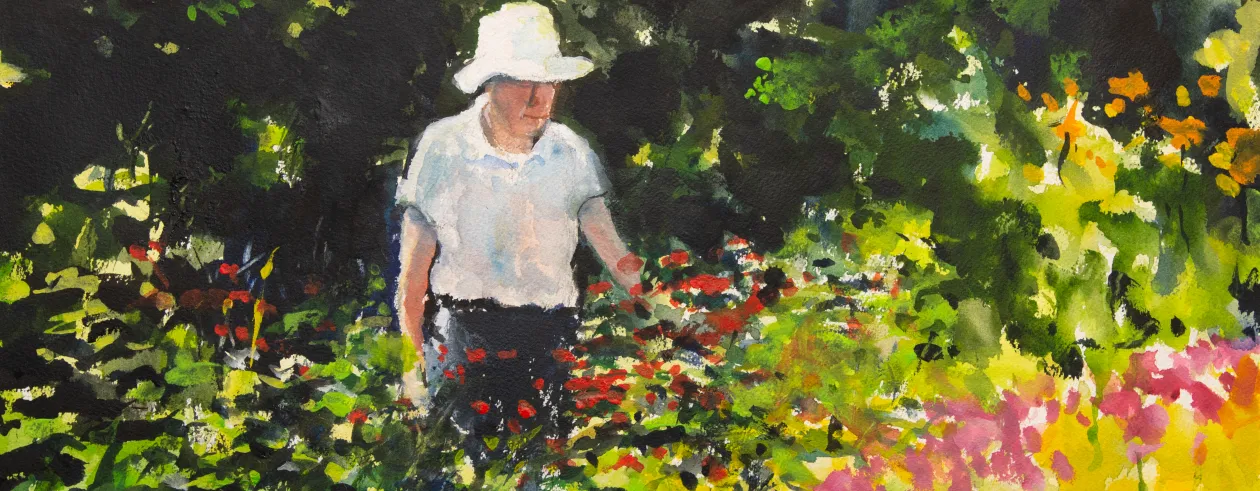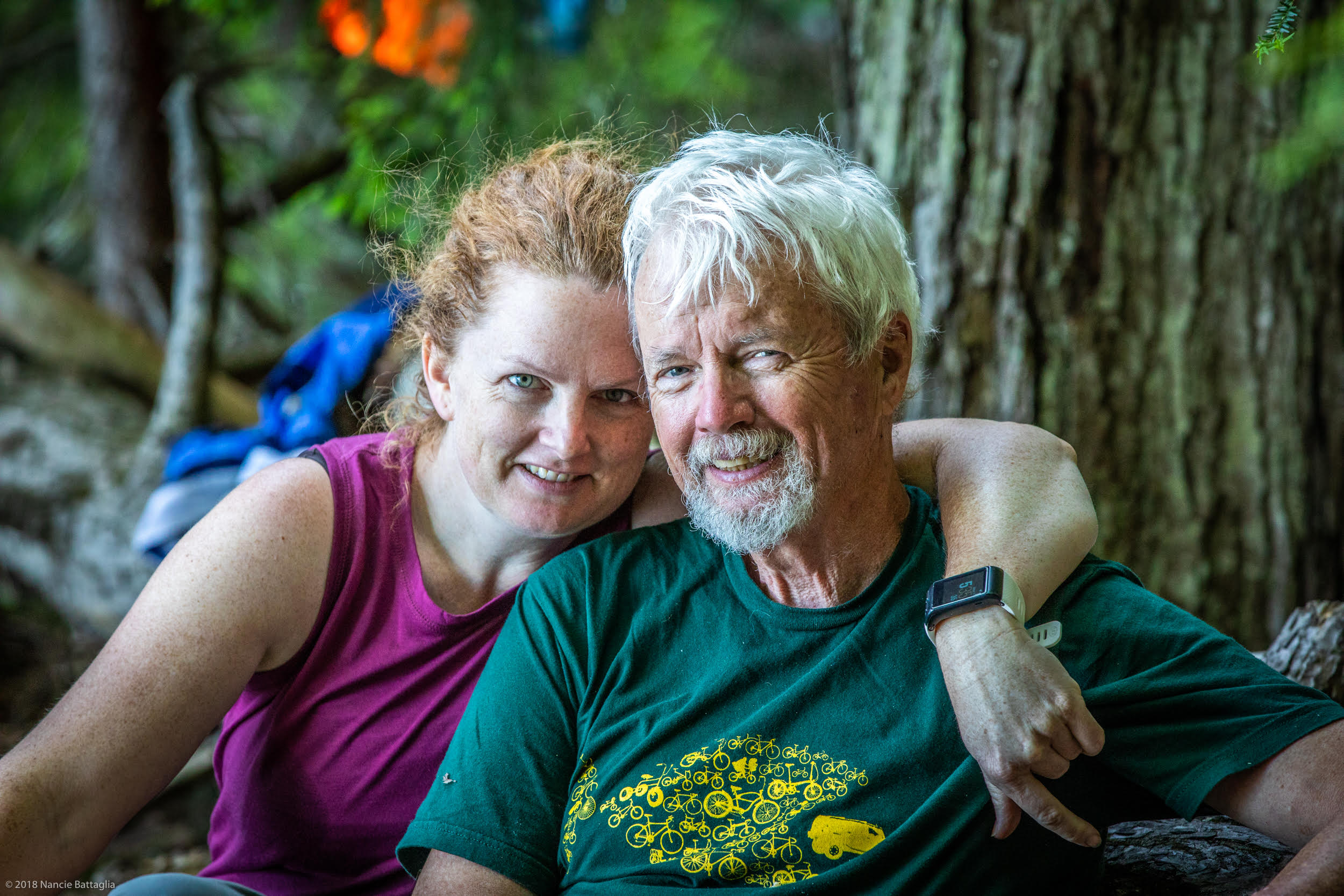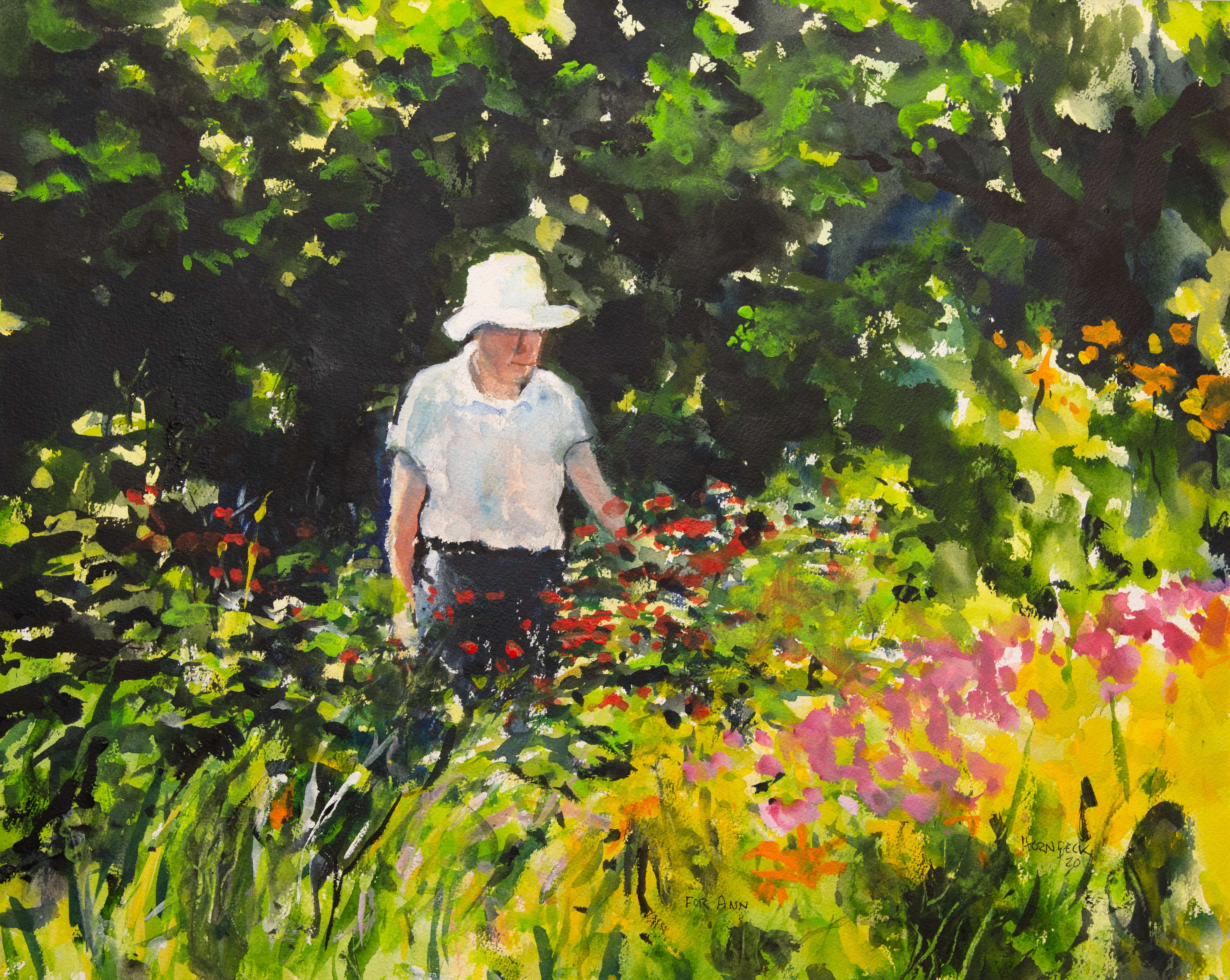
"The aim of art is to not represent the outward appearance of things,
but their inward significance."
Aristotle
Peter Hornbeck was only eleven years old when he painted a portrait of his family’s beloved beagle, Flopsy. Today, that portrait resides in the home of his daughter, Leigh Hornbeck, along with countless other portraits, drawings, and paintings brought to life by her father until his untimely death from a heart attack in December 2020.
Mr. Hornbeck was the creative mastermind behind the ultralight pack canoes known by paddlers near and far as Hornbeck Boats, but his boat building was another form of creative expression combined with a love for the outdoors from the artist within. “He was always interested in drawing and painting,” his daughter said. “He always liked doing very creative things with his hands, and I’ve always viewed his boat-building as an extension of that.”
From July 29-August 15, 2021, the Tupper Arts Center will host the Peter Hornbeck Tribute Show, the largest show to date of Hornbeck’s works. The event will be free and open to the public. Ms. Hornbeck, who graciously took the time to speak with me and share memories of her beloved father, believes it may very well be the largest show of her father’s work that will ever be held.
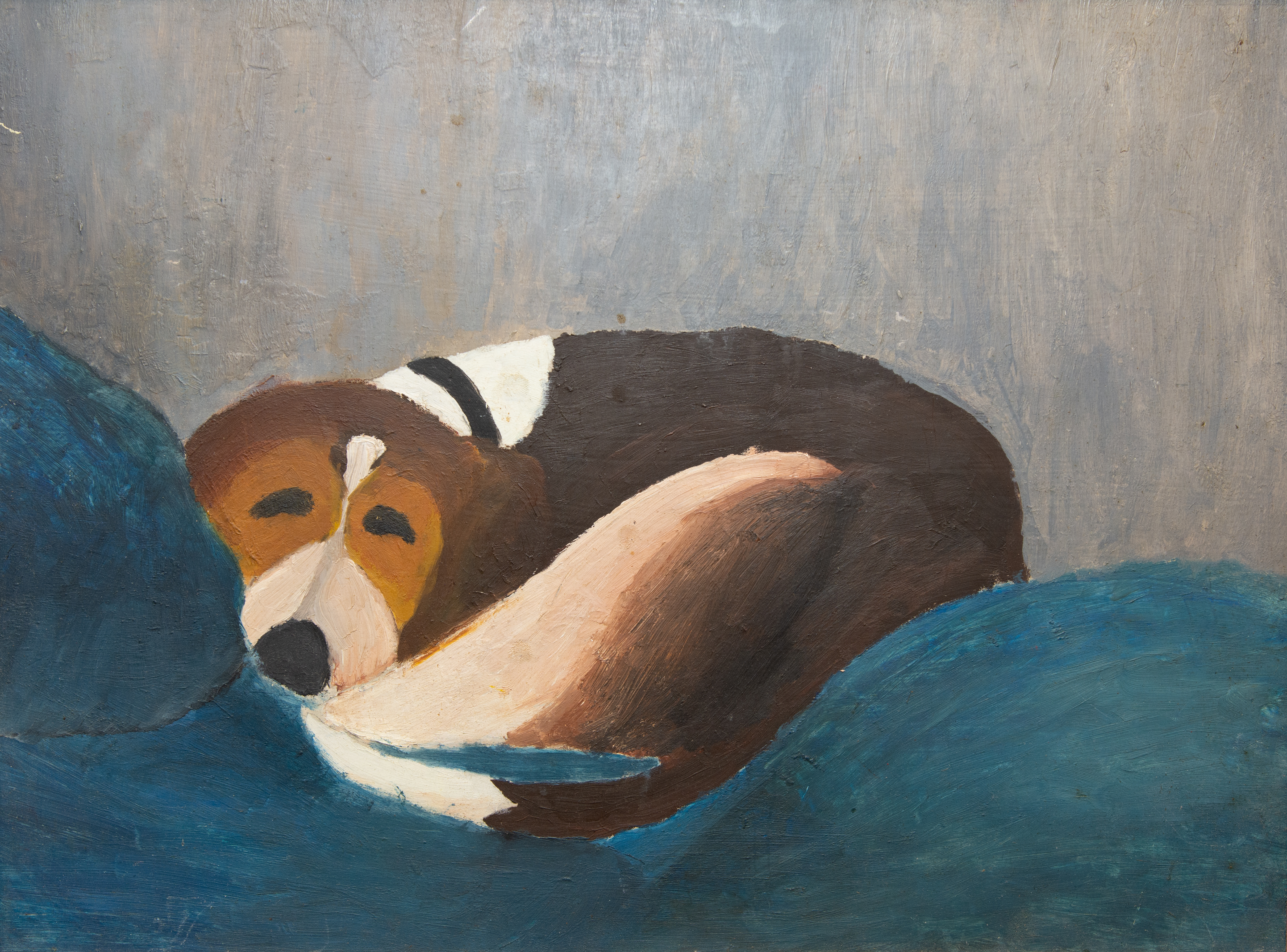
An extraordinary Adirondack gentleman
Those who personally knew Peter Hornbeck had the opportunity to experience the man behind the paintings, portraits, and boats.
“He was such a story-teller and a joke-teller,” Ms. Hornbeck said. “He taught me not to take life too seriously because you need to be able to laugh at yourself and the world, and he would do that. My father thought he was hilarious, and he was not particularly interested in whether or not someone else did. I am totally that way. He was a very intense guy inside, but if you didn't know him well, you would never have known that. People thought my dad was the most laid-back guy ever.”
Ms. Hornbeck went on to reflect on her father’s fierce sense of independence. “There’s a lot of push from society to be team players, but my parents just weren’t that. My father did things his own way, whether it was the best way or not, and I see that in myself. To be independent, on your own, not interested in what other people think or advise you to do, sometimes that really serves you and sometimes it really doesn’t, for good and for bad. So I look like my mom, but I am so my dad.”
In addition to his humor and individualistic spirit, Mr. Hornbeck was a philosopher and philanthropist. He founded what would come to affectionately be known as the League of Extraordinary Adirondack Gentlemen (LEAG), a group best described by Tim Rowland of the Adirondack Explorer as “a band of philosopher-paddlers plying the park’s crystal blue waters by day and solving the park’s problems around a campfire by night.” The group originated from a gathering of fellow friends and Adirondack enthusiasts for a camping trip, the youngest member teasing that he felt as though he were surrounded by a “League of Extraordinary Adirondack Gentlemen,” a name which would stick from that point forward. Over the years, Mr. Hornbeck had donated a number of his boats to various charities throughout the Adirondacks. What would ultimately become his final donation was a canoe built along with honorary members of the LEAG in the summer of 2020, a project done in lieu of the group’s cancelled annual paddling trip. The boat is set to be raffled on October 10, 2021 to raise money for the Adirondack Center for Loon Conservation in Saranac Lake.
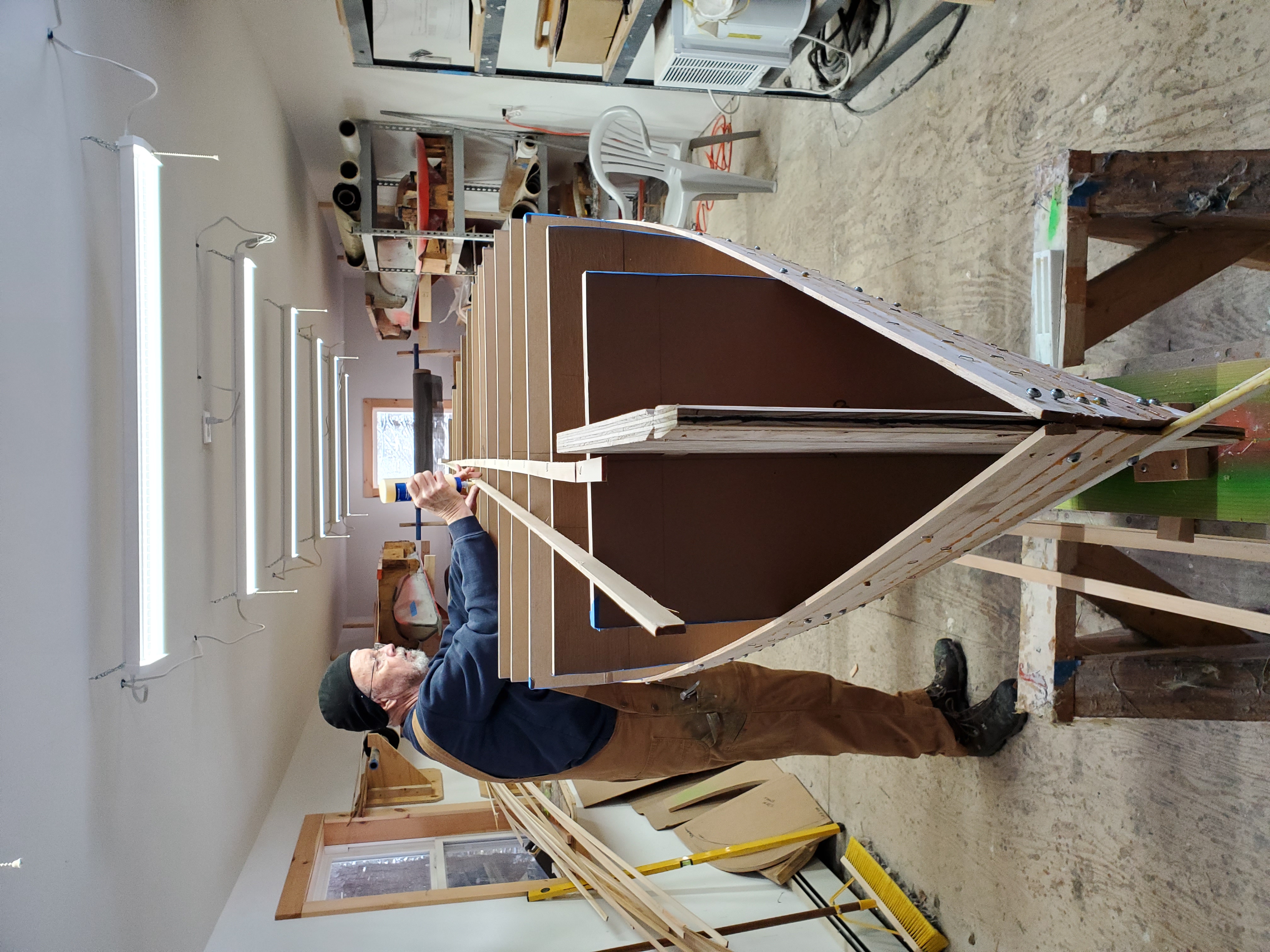
Self-trained, ADK inspired
Although an artist for the better part of his seventy-seven years, Mr. Hornbeck never received any formal training. His daughter recalls him being “a bit weird about showing his work.”
“You had to beg him to do it,” she said. “He didn’t take criticism very well, so he didn’t want to ever put himself in a position where he could be criticized.” Mr. Hornbeck’s training revolved around studying the works of other artists, especially painter Winslow Homer—whose works were largely inspired by frequent visits to the Adirondacks—and his deep interest in the craft. “His [my father’s] college degree was in philosophy. He was a school teacher, and he was a boat builder. None of it was training for his chosen [medium of] watercolors, so I think that has something to do with why he didn’t show more.”
Like Homer, Mr. Hornbeck held a deep love and affection for the Adirondacks. He preferred places that were not crowded, and the open landscape of the region was a desirable respite from more populated locations, offering an endless visual buffet for the artist.
It is perhaps the coniferous paradise that is the Adirondack region which inspired Mr. Hornbeck’s affection towards his favorite color, “Hooker Green”—an earthy, dark hue specifically created by author, botanist, and botanical illustrator William Jackson Hooker to capture the natural color of leaves. “He could never have enough green,” Ms. Hornbeck said. "My mother sometimes would be like, ‘Could you...maybe...move away from the green a little bit?’ And every once in a while, he would do that. He would paint an amazing sunset with a lot of these oranges and pinks.”
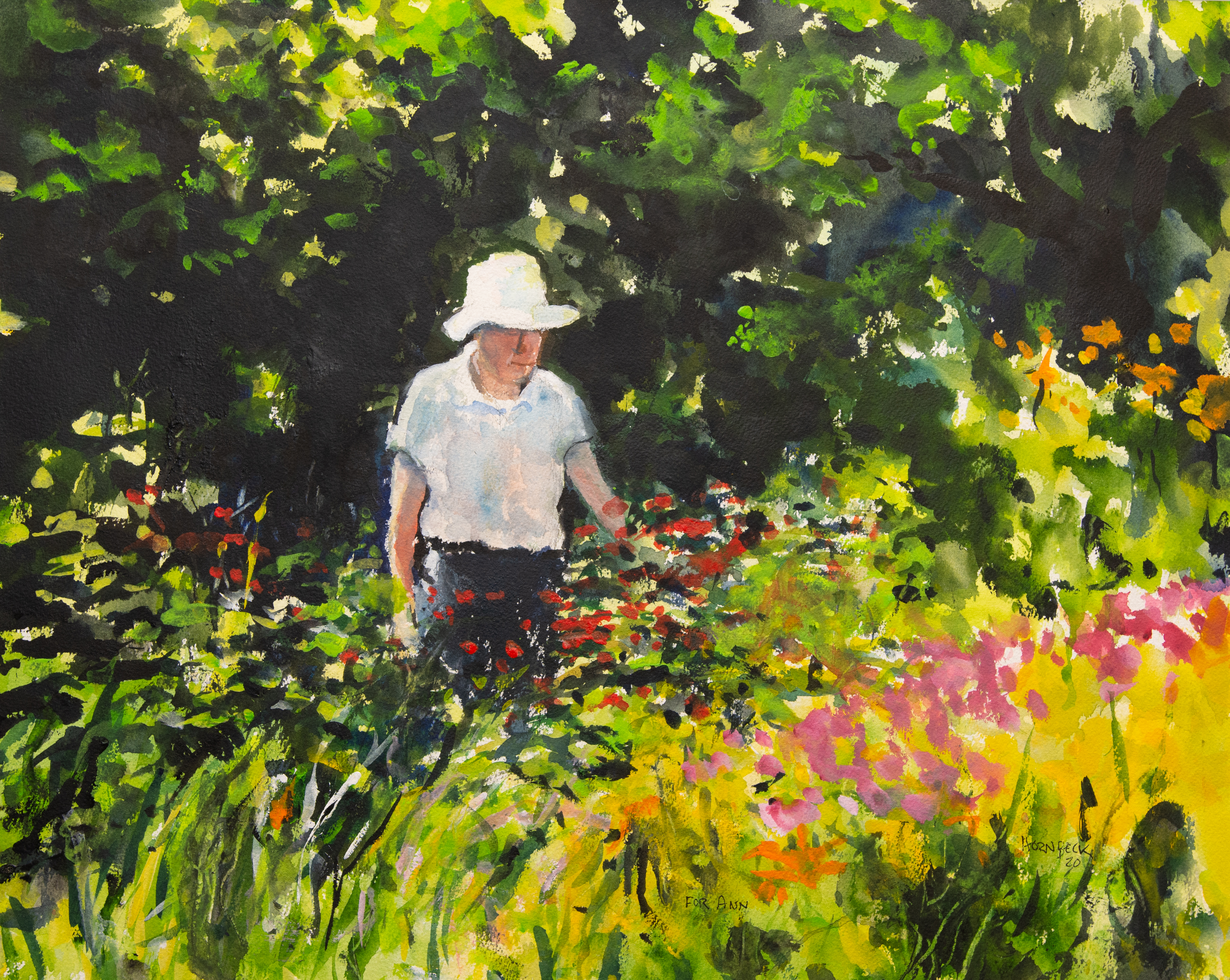
The flow of water
Portrayals of the natural world are a dominant theme in Mr. Hornbeck’s comprehensive body of work, primarily those which included images of water.
“He was drawn to water. Always water and things like boats...just anything that can be affiliated with water, specifically non-salt water. He does have some ocean paintings, but it mostly was the Adirondack scenes of fresh water: streams, rivers, lakes, paddlers, fishermen, mountains in the background. I have a friend who’s an artist as well, and she said, ‘Your father was so good at getting water right, getting the reflection from the sky.’ He loved that juxtaposition of air, water, and sky.”
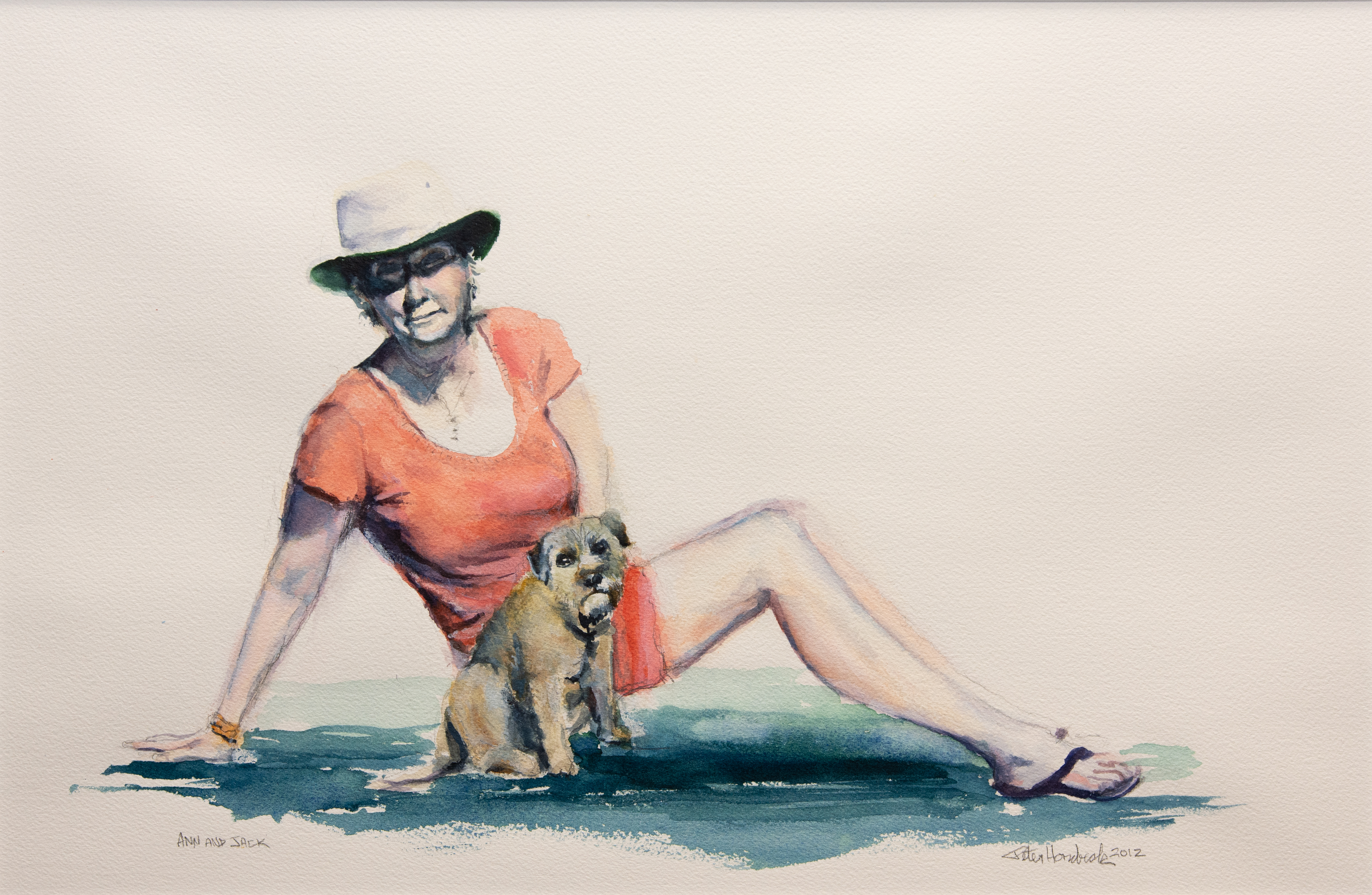
Prolific portraits both near and far
A lesser-known collection of works created by Mr. Hornbeck were his portraits—arguably his most intimate work. Many will be featured in the upcoming show alongside his drawings and watercolor paintings. Many of these portraits were created with pencil while others were drawn in pencil before being painted over in watercolor. He drew friends, family, students from his third-grade classes, and those he appreciated.
“He probably drew over 1,000 people over time. It was his way of a gift,” Ms. Hornbeck said. “If he liked you, he wanted to paint you. He wanted to draw your portrait. My mother went through treatment for brain cancer a couple years ago, and there was this wonderful oncologist. My dad, during their many visits there, got some pictures of her and then drew her portrait from the pictures.”
Ms. Hornbeck owns numerous portraits her father created of her throughout her life as well as those of her mother, Ann. As Ms. Hornbeck started her own family, her father created numerous portraits of her husband, Josh, and their children, as well.
There are a number of Mr. Hornbeck’s portraits floating around the country—perhaps even the world. His daughter hopes to collect scans of as many as possible to someday make a book of his work. “He drew these kids [his students] for over forty years. So now we are like, ‘If you have a drawing my father did of your kid while at Johnsburg Central Schools, we’d like to have a scan of it.’”
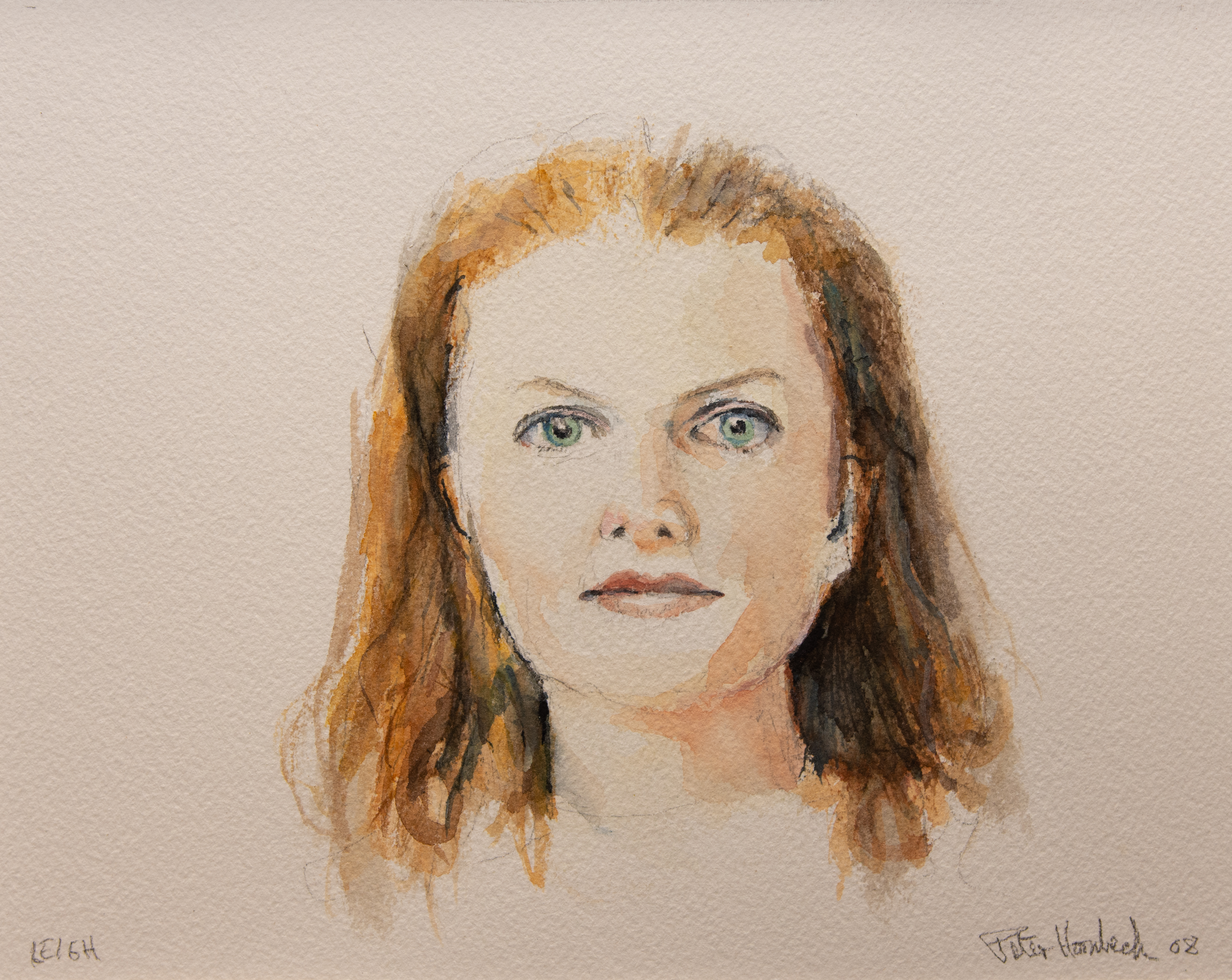
The Seneca Ray(s): a beloved painting and the search for a missing boat
I imagined asking Ms. Hornbeck to choose a favorite piece of art created by her father would be an impossible task, but I was surprised to learn not just her answer but the unsolved mystery surrounding the backstory which accompanied it.
“So. If you didn’t put your name on something [in my father's shop], like a paddle or a life jacket, it was probably going to get sold. So, he built me my own boat when I was an adult. I named it the Seneca Ray after [Adirondack photographer] Seneca Ray Stoddard. They don’t do this anymore, but he had an etching tool, and he etched up small next to the gunnel his name and ‘For my daughter, Leigh Hornbeck.’ That boat got sold! How does that happen?! It has my name on it! And he was the one that sold it because it was in the early enough days where he was really doing everything. So to this day someone is going around in that boat!” To this day, Ms. Hornbeck does not know the whereabouts of her Seneca Ray.
“He felt bad about it, ultimately, so he painted for me,” she continued. “It was one of his bigger paintings, and it’s just amazing. It remained one of his favorites, too. It’s this sunset, and it’s somebody paddling. Dusk is coming down around mountains, and it’s just a figure paddling through the water. He named it ‘The Seneca Ray,’ and he gave that to me for Christmas in 2005."
The painting always drew her father in every time he came to visit her home. “He’d always go around to look at it and admire it. He’d just go, ‘Ahh. I love this one.’ You could tell he kind of wanted it back,” she added, laughing. “I would just say, ‘No, no. No. This one stays with me.’”
The Seneca Ray painting will be featured in the upcoming art show.
Come see the show
Putting together the collection of Mr. Hornbeck’s works has been quite the task for his family, particularly his wife, Ann.
“It’s been a big ask of her,” Ms. Hornbeck said of her mother. “We’ve been taking the framed work, unframing it, taking it to a UPS store in Glens Falls that does the scanning so we can have the digital catalogue, and then reassembling and going through his stuff, going through the studio, which you can imagine is really hard.”
As we closed our conversation, Ms. Hornbeck referred to her father as a “legend on so many levels.”
“He was so in his element,” she said. “I think very few people get to live out their dreams to the extent that my father did. He loved his life, he loved where he lived, he loved that he was able to make [art and canoes] full-time, so it’s exciting to share this. I hope people really get out to see it.”
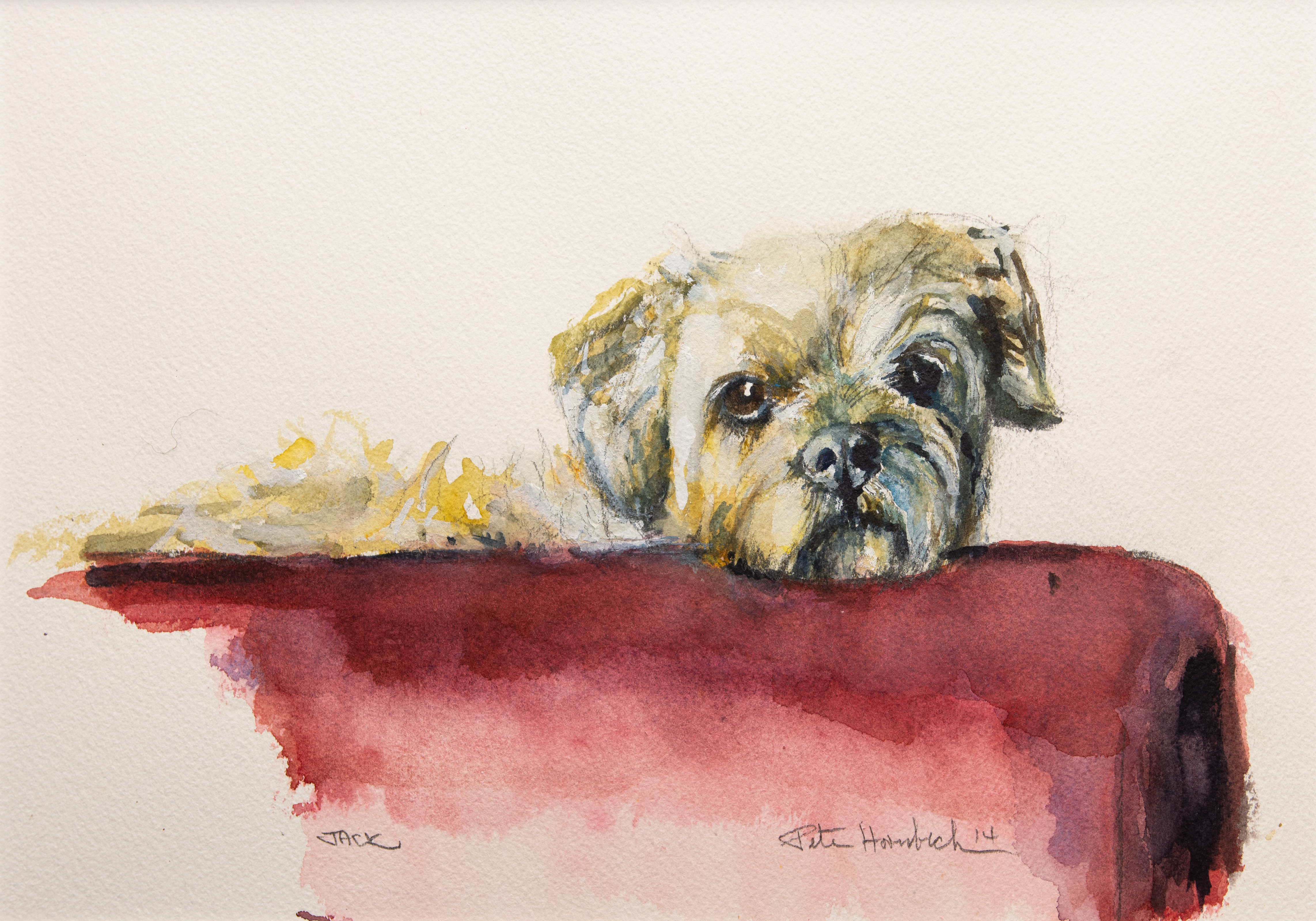
Whether you are a local or visiting Tupper Lake between late July 29 and August 15, be sure to stop by the Tupper Arts Center to see the impressive collection of Peter Hornbeck’s work. And to those of you who own a Hornbeck Boat, take a look by your gunnel to see if you are the owner of Leigh Hornbeck’s long-lost Seneca Ray!
